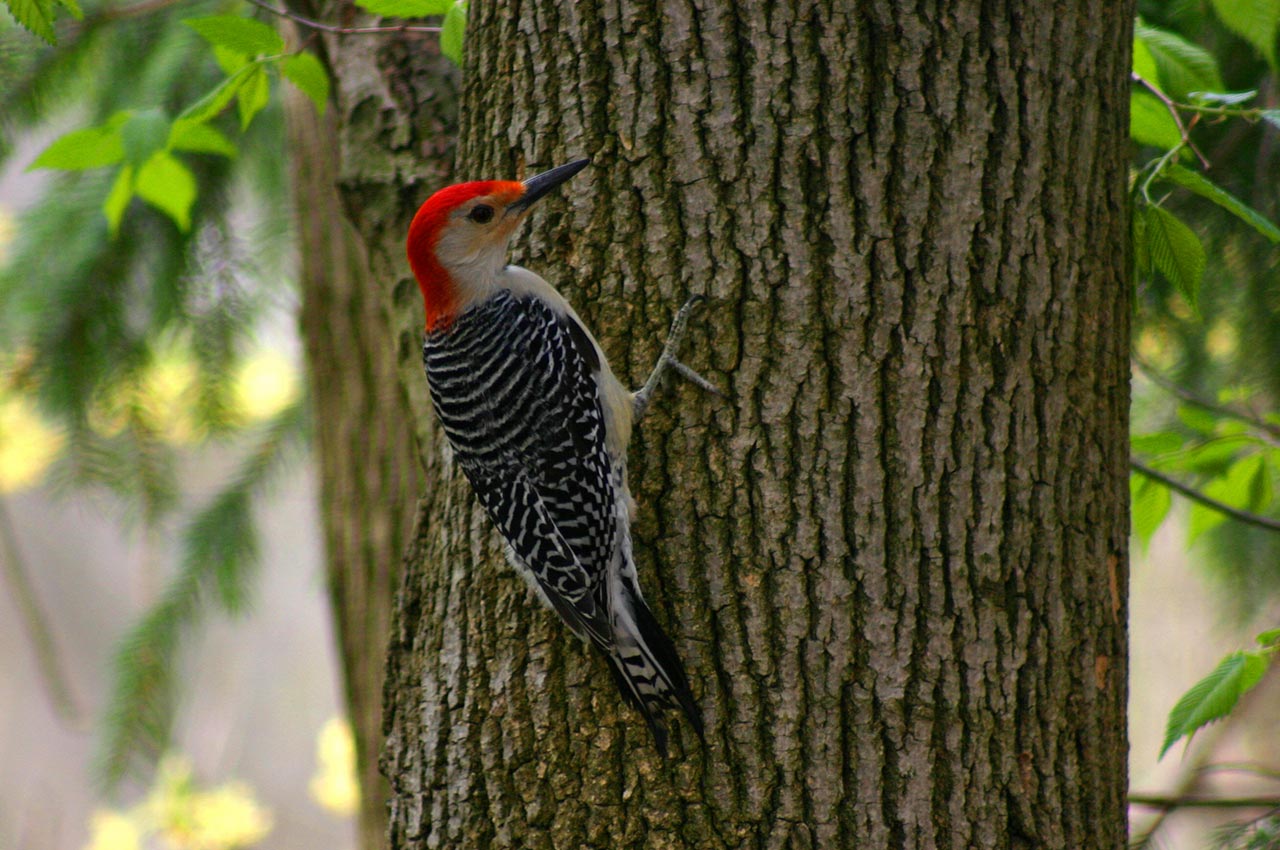Woodpeckers in Florida: Recognition Tips and Environment Preferences
Woodpeckers in Florida: Recognition Tips and Environment Preferences
Blog Article
Woodpeckers Unleashed: Discovering the Marvels of These Proficient Tree Climbers
Woodpeckers, with their distinctive markings and rhythmic drumming echoing through wooded locations, hold an one-of-a-kind place in the avian globe. Their specialized anatomy and adaptations allow them to navigate vertical surfaces with unmatched ability. Their mastery of tree climbing is simply one aspect of their remarkable habits. As we look into the complex details of woodpeckers' nesting routines, feeding strategies, and the ongoing preservation initiatives to shield these exceptional birds, a much deeper gratitude for their place in nature unravels.
Anatomy and Adaptations
When checking out the anatomy and adaptations of woodpeckers, one can observe remarkable features that enable these birds to prosper in their specialized environmental specific niche. In addition, woodpeckers have zygodactyl feet, with 2 toes facing forward and two dealing with in reverse, providing a company grip on tree trunks while they look for food or drum for communication.
In addition, woodpeckers have an unique tongue framework that is long, barbed, and sticky, allowing them to remove bugs from holes in timber. This specialized adjustment permits woodpeckers to make use of a food resource that is hard to reach to lots of various other bird species. Overall, the anatomy and adjustments of woodpeckers showcase the remarkable transformative options that have actually enabled these birds to flourish in their arboreal environment.
Drumming Actions
Having actually discovered the makeup and adjustments of woodpeckers, the emphasis now shifts to comprehending their drumming behavior, an unique aspect of their communication and territorial display screens. Drumming is a crucial type of interaction among woodpeckers, offering several objectives such as developing regions, attracting mates, and signaling alarm. Each woodpecker varieties has a distinct drumming pattern that helps individuals recognize participants of their very own species and differentiate them from competitors or killers.
Woodpeckers create drumming noises by rapidly pecking on resonant surfaces such as dead trees, utility posts, or also metal items, creating a collection of rhythmic beats. The strength and rate of drumming can vary based upon the objective; for example, a rapid drumming sequence may signify aggression towards trespassers, while a slower and softer drumming pattern could indicate courtship (Woodpeckers in Florida). Furthermore, woodpeckers might readjust the regularity and period of their drumming to convey certain messages efficiently
Nesting Behaviors
Discovering the nesting behaviors of woodpeckers reveals interesting understandings into their reproductive habits and habitat options. Woodpeckers are known for their special nesting preferences, often excavating cavities in trees to produce sheltered areas for elevating their young. These tooth cavities offer not just as a nesting website yet also as a safe and secure refuge from killers and harsh weather condition.
Woodpeckers display a high degree of fidelity to their nesting websites, usually going back to the exact same place time after time. This behavior highlights the importance of appropriate habitat schedule for their reproductive success. The option of a nesting website is critical for woodpeckers, with variables such as tree species, height, and degeneration stage playing considerable duties in their decision-making procedure.
Surprisingly, some woodpecker varieties are recognized to dig deep into numerous dental caries within their territory, offering themselves with alternate nesting choices. This strategy may work as a type of insurance against prospective risks or disturbances to their key nesting website.

Feeding Methods
Woodpeckers utilize a variety of specialized feeding methods to obtain their key food resources. Among one of the most unique feeding behaviors of woodpeckers is drumming, which entails rapid pecking on trees to discover bugs under the bark. This drumming check here not only helps them locate victim yet likewise functions as a way of interaction with various other woodpeckers. Woodpeckers have solid, chisel-like beaks that allow them to drill into wood effortlessly. As soon as a hole is created, they utilize their long, barbed tongues to remove insects such as ants, beetles, larvae, and spiders. These tongues are coated with sticky saliva that aids trap the victim. Woodpeckers are likewise known to dig deep into cavities in trees to gain access to concealed insect larvae or sap. Some species, like the acorn woodpecker, shop nuts in specially developed holes called granaries. This calculated keeping of food assists them endure during food shortage periods. Woodpeckers are really remarkable in their feeding techniques, showcasing adaptability and knowledge in acquiring their nourishment.
Conservation Efforts
Amidst the elaborate feeding methods exhibited by woodpeckers, the preservation efforts targeted at protecting these fascinating birds play an essential role in protecting their environments and populations. Woodpeckers encounter various risks to their survival, consisting of environment loss because of deforestation, climate adjustment altering their ecosystems, and crashes with manufactured frameworks such as buildings and vehicles - Woodpeckers in Florida. Preservationists are proactively functioning to attend to these challenges and guarantee the long-lasting wellness of woodpecker types

Education and public understanding projects are also essential elements of woodpecker conservation efforts. By increasing awareness about the importance of these birds in preserving healthy and balanced forest ecological communities, preservationists can garner support for habitat conservation efforts and advertise responsible land monitoring methods. With joint efforts between scientists, policymakers, and regional neighborhoods, we can interact to protect a future where woodpeckers thrive in their all-natural environments.
Verdict

Report this page